Too high water in your toilet bowl can cause a headache if it’s not fixed soon. For this, you might seek to know how to lower the water level in a toilet bowl?
To lower the water level, you first find out the reason behind the high water level in the toilet bowl. Once you know the main reason, lowering the water level will be easy.
This article will discuss the possibility of having too-high water in your toilet bowl and how to resolve the problem. You will also learn here how to properly adjust the water level so that you can fix any future issues in such a situation.
Let’s jump into the details.
Lowering Water Level In Toilet Bowl (Reasons and Solutions Revealed)
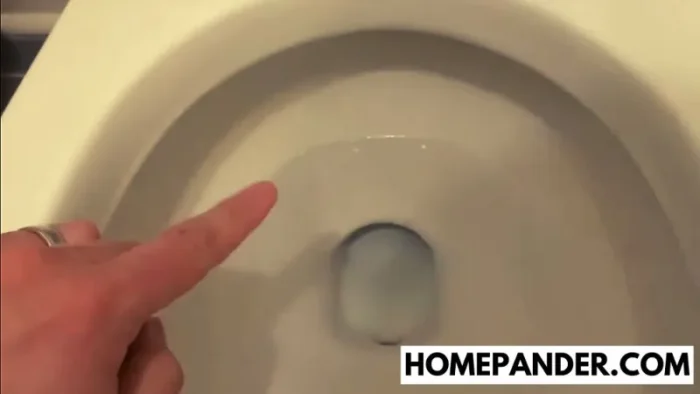
How To Decrease Water Level In Toilet Tank?
If your toilet water level is too high, you should check whether there is a clog in your pipe.
Unclogging Pipe

If the water level of your flushing toilet is too high, that usually indicates your toilet pipe has been clogged. So when you flush the toilet the water can’t flow out and gradually increases the water level.
In that case, be sure if the problem is a clogged pipe. You can be sure of your doubt with a quick test. Fill a bucket of water and pour it into the pipe. Your suspicions are correct if the water stays standing without flowing out.
To resolve this problem, you can follow the three steps below
- Put a pair of rubber gloves and reach your hand into the toilet bowl.
- See if large items such as diapers or tampons are stuck there, clogging the toilets.
- If there is anything, take it out and check whether the water is flowing as usual.
But if you don’t find anything there, then probably the blockage is further below the pipe. You might try out a plunger or pour hot boiling water through the pipe to remove this blockage.
Otherwise, you can also use chemical dissolve products to remove the clogging. Congratulations, you have successfully solved the issue.
But unfortunately, after lowering the water, you discover the toilet bowl with too much and stubborn copper stains because of the hard water. To know the process of removing the copper, you can check out this article.
But, if none of these methods work, you might need to call a professional.
How To Adjust High Water Level In Toilet Bowl?
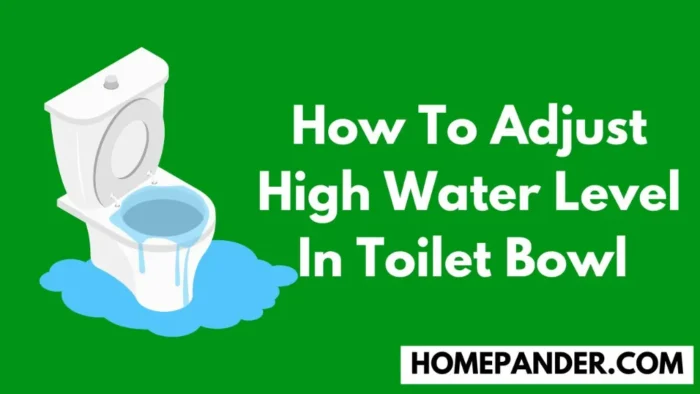
Whether you want to lower or increase the water level of your toilet bowl, you first identify the reason for these circumstances. However, if you don’t find any problem in the toilet pipe, having the right water level begins with the fill valve adjustment.
The fill valve has a float that moves according to the water level in the toilet tank. Though there are different types of fill valves, the adjustment of each of them is different too.
Things You’ll Need
No matter which type of adjustment you make, you’ll need the same material below for each of them.
- Screwdriver
- Penetrating oil (optional)
Can You Increase Water Level In Toilet Bowl?
Yes, you can increase the water level in the toilet bowl. If the water level in your toilet bowl is too low, there is a high chance of having any issues inside your toilet tank. In that case, first, you have to check the water level in the toilet tank.
- Remove the toilet tank lid and put it aside on a flat surface.
- Now check the water level in the tank. The ideal water level should be about 1 inch to 2 inch below the fill valve and overflow tube.
- If the water level of your toilet tank is significantly lower than that, you probably need to adjust the water level in the tank.
However, there are different variations in the toilet tank mechanisms, including the ball & arm style float and the cylinder style float to control the water level.
3 Ways To Adjust The Water Level In Your Toilet Bowl
Here we describe the ways to adjust the water level in both the ball-style float and cylinder float. So let’s check it out.
1. The Ball & Arm Style Float

A plastic ball float is attached to a long arm at the top of the fill valve. The float indicates the amount of water level after refilling the tank. If the ball is not broken, it will be on the water level. Here’s how to decrease the water level in the toilet bowl by adjusting the ball float.
- Locate the external water valve and turn off the water supply to the toilet tank.
- Next, flush the toilet so that all the water in the tank is removed entirely.
- Test whether the ball float is damaged. If it’s damaged or you find water inside the ball, you might install a new one.
- If the ball is intact, then adjust the ball.
- Locate the screw on top of the fill valve using a screwdriver, turn it clockwise in one full rotation. It will adjust the height of the float to lower the water level. If you want to raise the water level, turn the screw counterclockwise.
- Turn on the water supply and flush the toilet to test the water level below the top of the tank’s overflow tube. And make further changes if needed.
2. The Cylinder Style Float

Some modern toilets now come with the latest cylinder style float instead of an older ball and arm style.
- Find the modification stem, a long and slender tube connecting to the fill valve and extending horizontally from the top. In most models, it runs parallel to the fill valve.
- Some cylinder float position by squeezing a release clip on the float. If your float has a release clip, squeeze it to adjust the height.
- To adjust the height of a cylinder float, turn the release clip counter wise with a screwdriver that will help to raise the water level and clockwise to lower the level.
- Now test the water level by flushing and make adjustments if needed.
3. Installing A New Fill Valve

If the adjustment mentioned above does not seem to help, you might need to install a new fill valve. Purchase a new fill valve that is similar to your previous model fill valve and follow the instruction below:
- Close the water supply and drain off the water in the toilet bowl. You should flush until the toilet tank becomes empty. Wipe the residual water in the tank with a dry cloth or sponge.
- There are two nuts on the outside of the tank. Unscrew both nuts, and the fill valve will come out.
- Lift the old fill valve out of the tank, including the attached float.
- Fit the bottom portion of the fill valve through the hole in the tank’s base. Make sure the valve sits in place. No moving or wobbling around.
- Now reattach the water hose back to the bottom of the valve. Screw the nuts back tightly to prevent leakage from the water hose.
- Turn on the water supply and give the toilet a test flush to watch if it’s working properly.
Note: If the water level doesn’t improve, it’s wise to call a professional. A plumber may help you to troubleshoot this problem.
Other Options For Adjusting The Water Level In A Toilet Bowl
The tank doesn’t always need to be responsible for lower or higher water levels. The other option might need adjusting the water level in a toilet bowl.
1. Clearing The Plumbing Vents
If you don’t find any problem in the tank, the plumbing vents could be responsible for that. So first, you need to understand whether the plumbing vents in your home are working properly or not. Vents allow air in to control the proper pressure.
So when the vent is blocked anyhow, air can’t come in, and the water becomes unable to flow.
In that case, you might climb onto the roof and flush your pipes through the water with a garden hose.
If the vents are blocked, perhaps due to falling leaves or other detritus, you can use some cover for your vent. The cover will protect the vent from falling inside and prevent further blocking.
2. Cracked Toilet
If the problem does not come from your tank or your plumbing vent, the other possible reason for the water level in the toilet bowl to be lower than normal is a cracked toilet. Check for the hairline crack in your toilet bowl—otherwise, test whether the water level drops after each flushing. If so, your toilet is dealing with some kind of leaking.
Or you might find a puddle of water on the floor around your toilet. If you’re sure your toilet has been cracked or dealing with some other kind of leaking, it should be fixed as soon as possible.
If the crack is less, you might repair it, and in major cases, the whole toilet needs to be replaced. If you can’t find the problem anyhow, take help from a professional.
Here is a helpful article on how to replace a wax ring on your toilet.
Related Questions
Why is the toilet water level too high in a bowl?
A high water level usually indicates a bigger problem with your toilet. Several reasons can be responsible for that. There could be a partial or complete clog in the toilet drain. Or your toilet tank water level may not be the proper level. Otherwise, less flushing power can lead to a clog in your toilet, and thus the water level becomes too high in your bowl.
How To Lower Water Level In Toilet Bowl Kohler?
Kohler toilets are now the most renowned and best-selling toilets worldwide. Turn an adjustment screw on the top of the fill valve to lower the water level in the toilet bowl. To lower the water level, turn the screw counterclockwise.
How To Lower Water Level In Toilet Tank Fluidmaster?
To adjust the toilet tank with fluid master, Follow the three steps below.
- Turn the adjustment screw clockwise with your hand to lower the water level.
- Flush the toilet and test the new water level
- Repeat turning the screw until you get the right level.
What Determines The Water Level In A Toilet Bowl?
The outlet height of the internal P-trap determines the water level in a toilet bowl. That’s why when the drain pipes become clogged, it leads to high water levels.
How to lower the water level in the toilet bowl to clean it?
Find the water supply valve in your toilet and shut it off. The shutoff valve is usually located behind the toilet, close to the floor.
In Conclusion
This is all for lowering the water level in the toilet bowl. We hope that this article will help you to achieve your purpose with little effort and energy. No matter the reason, we provide easy solutions for each, and you don’t need to go to a professional.
Up until the next, best wishes!




![How to Remove Crystallized Urine [Explained]](https://homepander.com/wp-content/uploads/2022/02/How-To-Remove-Crystallized-Urine.jpg)

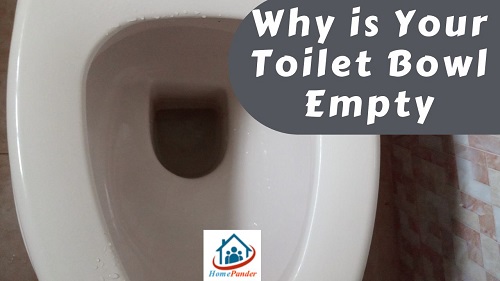

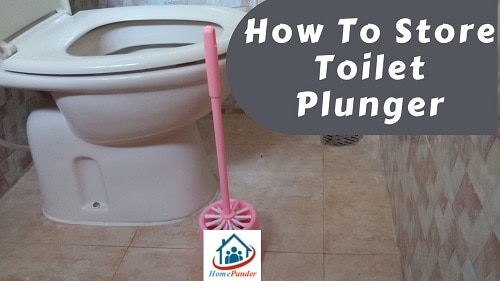
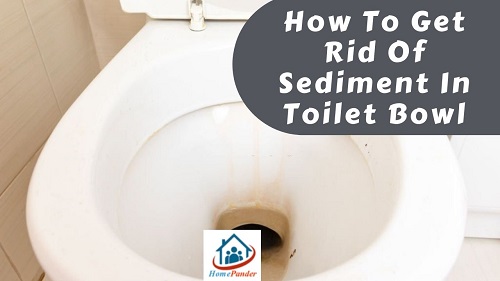
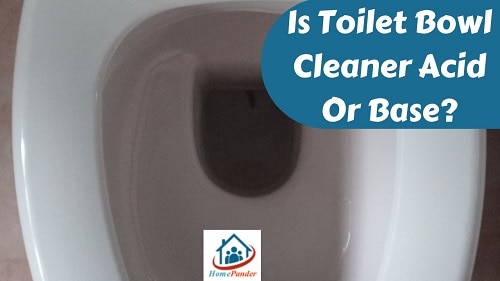
![How To Clean Dark Grout That Has Turned White [5 Easy Ways]](https://homepander.com/wp-content/uploads/2021/12/How-To-Clean-Dark-Grout-That-Has-Turned-White.webp)